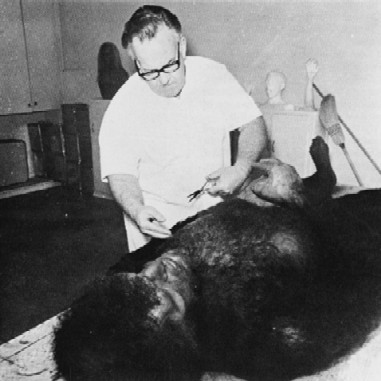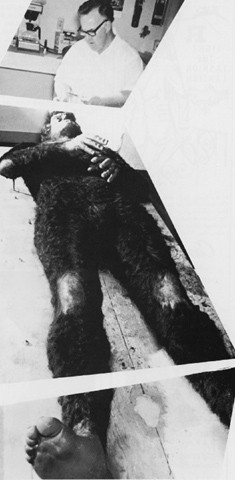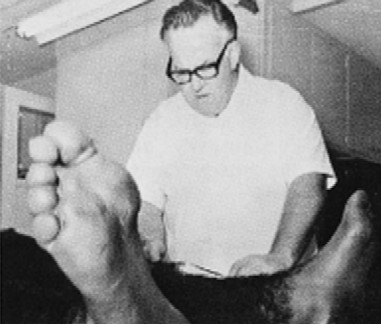
May 11, 2006
It seems that the general consensus with special effects professionals in the movie industry is that the Patterson/Gimlin film depicts a man in a costume. Many state that it has been common knowledge in the industry for years that the film was faked. The name most often associated with this is veteran monster effects master John Chambers.
Chambers is probably best known for creating the apes for the movie Planet of the Apes. He also made "creatures" for Lost in Space, The Outer Limits and Night Gallery.
There are rumors that John Chambers created the suit that Patterson used to hoax the film. Director John Landis has been quoted as saying such. One of the rumors is that Chambers recycled one of the suits used for Lost in Space with a new of different head for use in the Patterson/Gimlin film.
Many industry insiders have said that they learned this from special effects veteran Rick Baker. Baker later recanted saying that he no longer believed it to be true.
Chambers himself denied having anything to do with the Patterson/Gimlin film. He stated that the only Bigfoot he had any hand in creating was the "Burbank Bigfoot". In an interview 4 years before his death in 2001, Chambers said that he wasn’t good enough to have created a costume that duplicated the subject of the Patterson/Gimlin film. He said that he allowed the rumor to persist because it "was good business."
The "Burbank Bigfoot" was a stone prop that Chambers created in his garage. It was allegedly used for a carnival sideshow.



The Burbank Bigfoot was a 900-pound, seven-foot-four-inch Bigfoot model created by Chambers and his crew in the makeup artist’s Burbank garage. According to makeup artists Tom Burman and Werner Keppler, the body was an alginate life casting of the actor Richard Kiel, best known for his role as "Jaws" in two James Bond films. Chambers worked on the face to create an "apeman" look and ultimately the whole body was cast in plaster. The plaster body was meticulously painted by Chambers and then covered in three pounds of human hair, the hair alone requiring a week of work. "Body hairs were placed on the figure a few at a time, and blended with various colors to match the patterns found on gorillas, monkeys, and humans. After the hair was set in place, Chambers and his men cut and trimmed it carefully, to give the entire hair covering an even natural look," according to an article in Hollywood Studio Magazine ("’Bigfoot’ Born in Burbank?," June, 1970). Werner Keppler clearly recalls the laborious fabrication process and the way that the huge plaster body was hoisted out of the studio-garage by rented crane.
Quoted from Strange Magazine 17, Summer, 1996.
Did any of the Cryptomundo readers see this prop in a sideshow?
About Craig Woolheater
Co-founder of Cryptomundo in 2005.
I have appeared in or contributed to the following TV programs, documentaries and films:
OLN's Mysterious Encounters: "Caddo Critter", Southern Fried Bigfoot, Travel Channel's Weird Travels: "Bigfoot", History Channel's MonsterQuest: "Swamp Stalker", The Wild Man of the Navidad, Destination America's Monsters and Mysteries in America: Texas Terror - Lake Worth Monster, Animal Planet's Finding Bigfoot: Return to Boggy Creek and Beast of the Bayou.
Filed under Artifacts, Bigfoot, Bigfoot Report, Cryptozoology, Evidence, Movie Monsters, Sasquatch